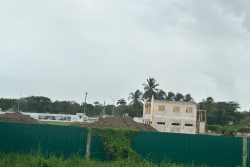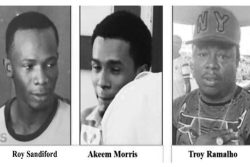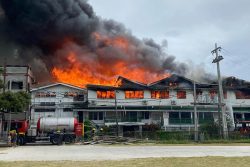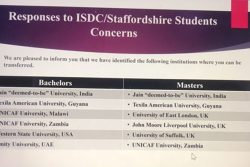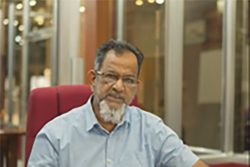MIAMI (Reuters) – Rebuilding earthquake-ravaged Haiti is a task similar to rebuilding Europe after World War Two and involves complex decisions on how to house or resettle more than a million people left homeless by one of the world’s worst disasters, a senior World Bank official said.
Eight months after the magnitude 7 quake on Jan. 12 that shattered large parts of the Haitian capital Port-au-Prince, killing up to 300,000 people, the international aid community has faced criticism that efforts to clear rubble and relocate survivors from makeshift camps have been slow to materialize.
Pamela Cox, the World Bank’s vice president for Latin America and the Caribbean who has been focusing on Haiti’s reconstruction, says the world needs to be aware of the scale and complexity of the goal to “build back better” in Haiti.
“It is, I think, one of the worst situations that the world has faced,” she said in an interview on Tuesday afternoon on the sidelines of a conference on the Americas in Miami.
She compared rebuilding Haiti’s teeming capital and reviving the crippled economy to reconstructing an area devastated by war, like Europe after World War Two, with “the complicating factor in Haiti (that) it is one of the poorest countries in the world and this was their economic centre.”
Cox recalled that it took years for many residents of New Orleans to be able to return to their homes after the death and destruction inflicted by Hurricane Katrina in 2005, and London still showed the scars of the German bombing blitz during World War Two well into the 195Os.
“So while everyone wants a magic wand to be waved (in Haiti) and everything fixed by January, the first anniversary … that ain’t going to happen, it’s impossible,” Cox said.
She said that while Haiti’s government and relief partners were making debris removal and housing their key priorities, it was likely many of the estimated 1.5 million quake homeless would still be living in camps into next year.
“We need to watch out for the people in the camps, make sure that they get the services, the security, the food and everything else,” Cox said.
In March, foreign governments, multilateral bodies and non-governmental groups from around the world pledged $9.9 billion for Haiti’s post-quake reconstruction, $5.3 billion for the next two years alone. Cox said coordinating the efforts of so many disparate aid bodies was in itself challenging.
“It’s like herding cats sometimes, working with all the actors,” she said.
Moving people out of the camps into more secure shelter or permanent housing posed multiple challenges — design, logistical, social and economic. Questions of ownership and land tenure added layers of legal complications.
“This isn’t like a developer coming into southern Florida and seeing a parcel of land, you know, building condos or whatever,” said Cox. She said most of those made homeless did not own the houses they were in but were paying rent.
Homes piled higgledy-piggledy on Port-au-Prince’s hillsides had collapsed like cards in the quake, witnesses said, adding to the confusion of sorting out tenure and ownership.
“It’s very hard to get people to go back to their houses after they’ve been in a camp … they don’t have to pay rent in a camp. The camps have services, entertainment, food distribution,” Cox said. She added that at the same time no one wanted the sprawling survivors’ camps to become permanent.
